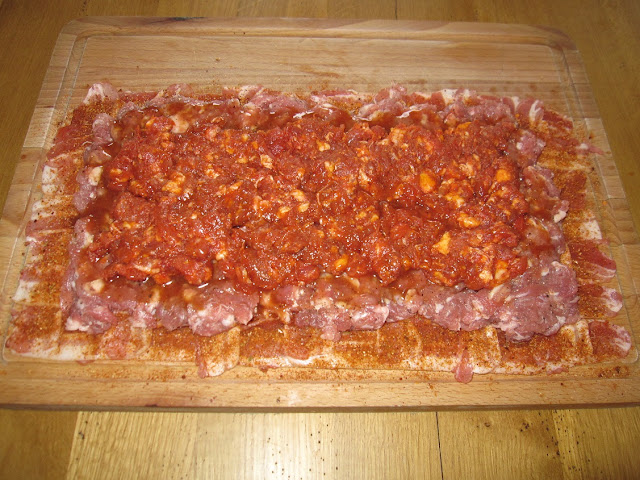Having recently discovered the Bacon Explosion, I thought I would combine that with a "classic" Swedish dish called "Flygande Jacob / Flying Jacob". There might have been some alcohol involved during that thought process...
The Flying Jacob dish was created in the early 70s as a kids meal, but it's really enjoyed by grown-ups as well. Most people do look a bit skeptic when told that it contains rice, bananas, peanuts, chicken and bacon... So the trick is usually to emphasize the bacon part.
http://en.wikipedia.org/wiki/Flying_Jacob
Anyway, having emphasized the bacon part and the beer part (I did mention that part, didn't I?) I figured it would combine very well with the Bacon Explosion concept, plus I got to barbecue the Flying Jacob. :)
First up was a layer of thinly sliced chicken breasts, which I put on some cling film to help with the rolling later on. Add a thin layer of cooked rice on top, sprinkle lots of peanuts and slather in sauce (2 parts cream, 1 part Chili Ketchup) and top it off with two bananas.
Then try to roll it up with out making too much of a mess. The cling film really helps, trust me.
Place all of it on the prepared bacon weave and make a nice even roll. Removing the clingfilm is recommended.
On and in the barbecue for about and hour, making sure that the chicken has reached a suitable temperature.
Cut it up and serve.
The result? Assuming you enjoy the original dish, this one was even better.





























